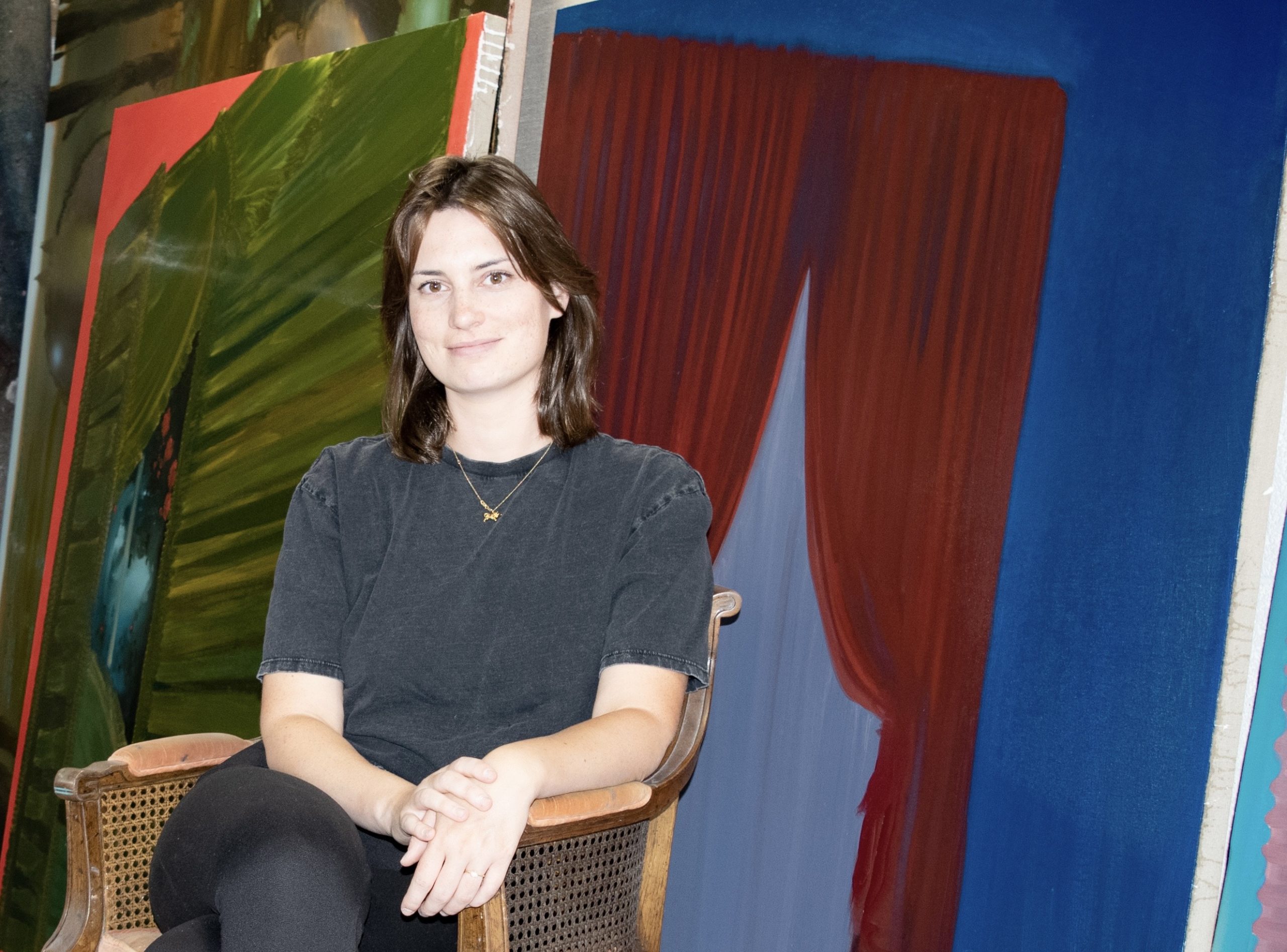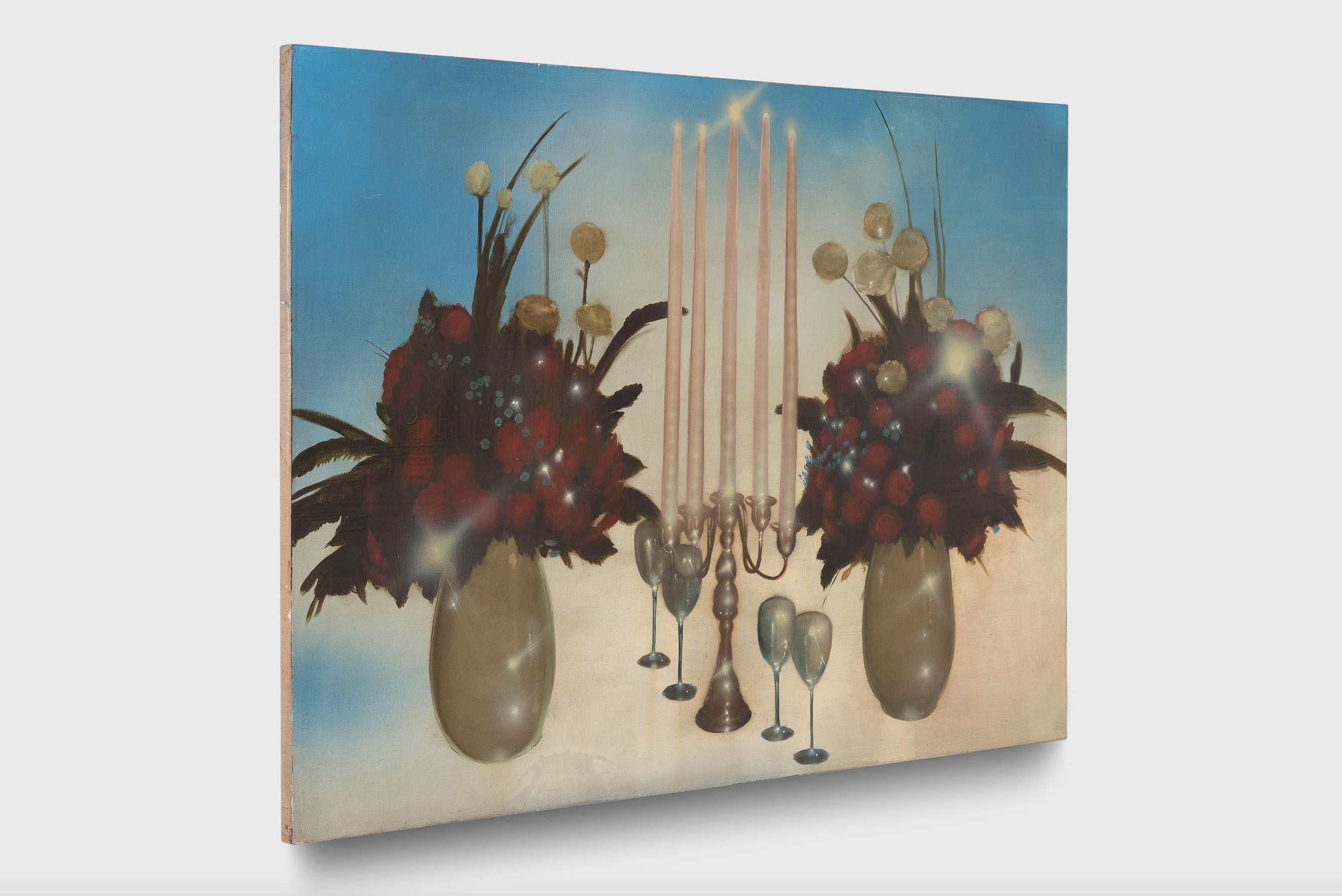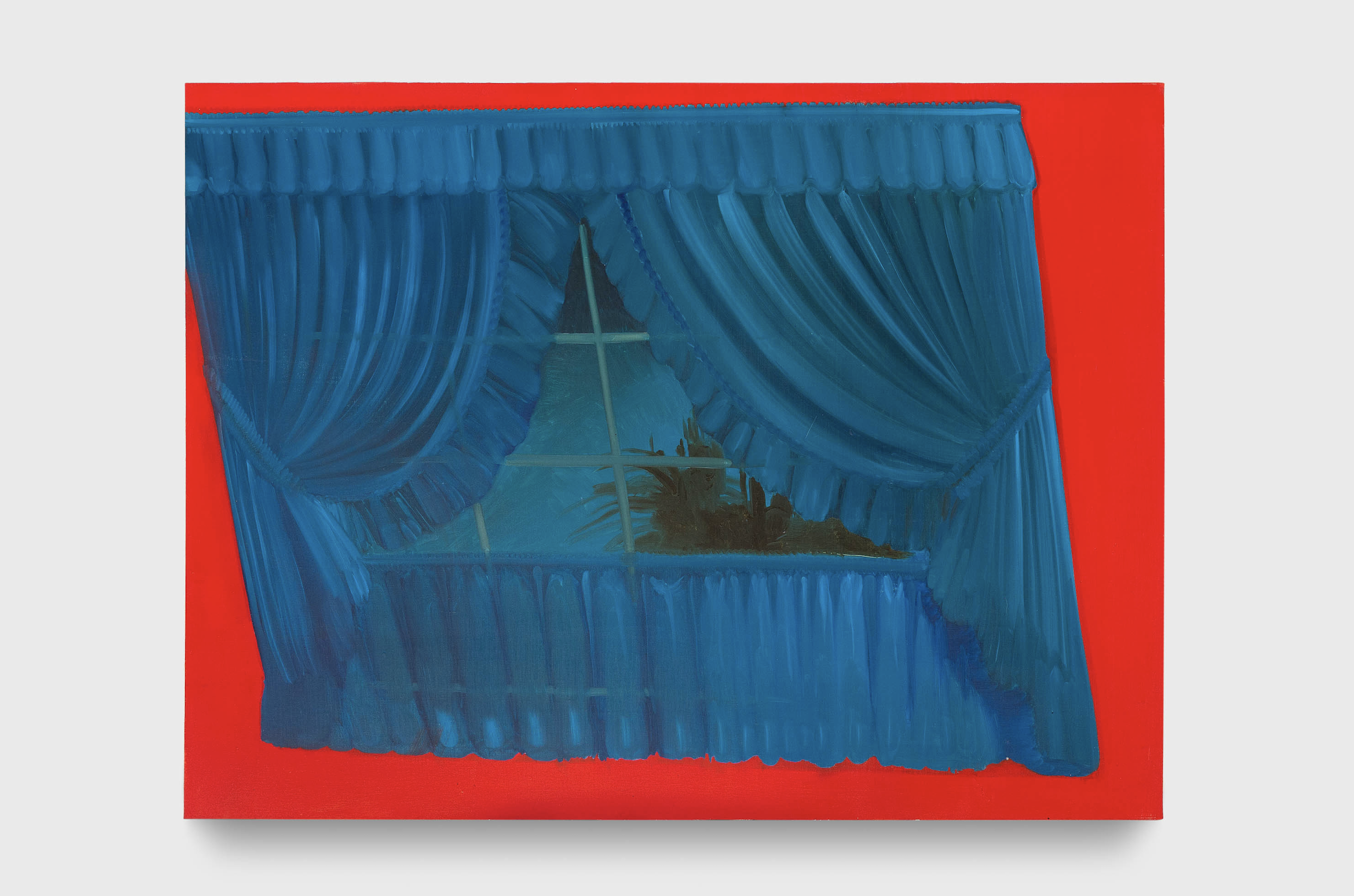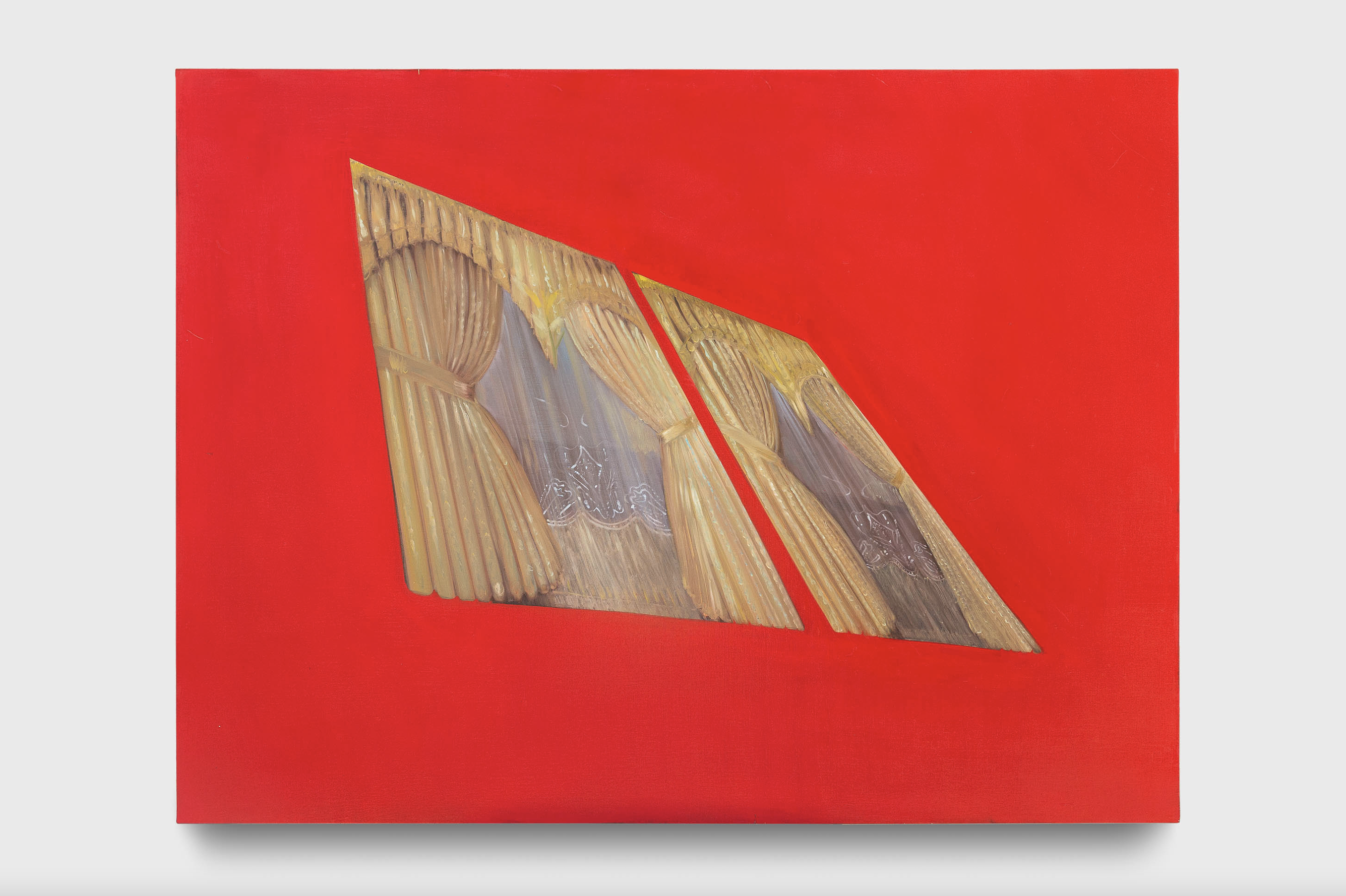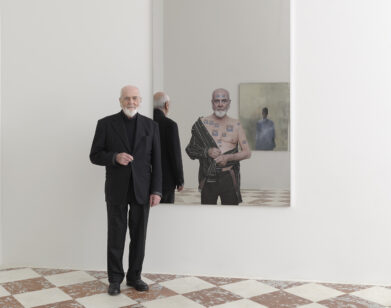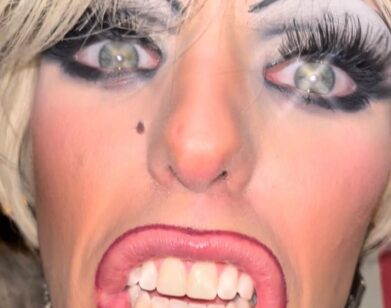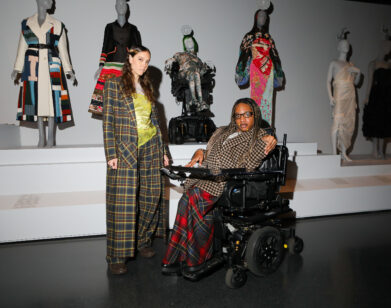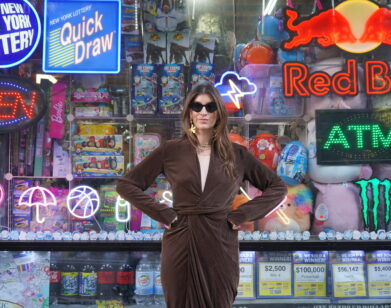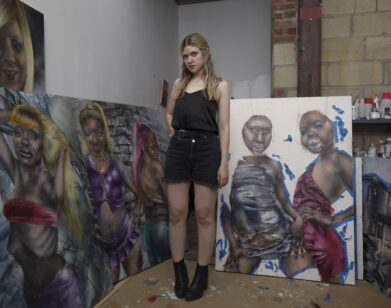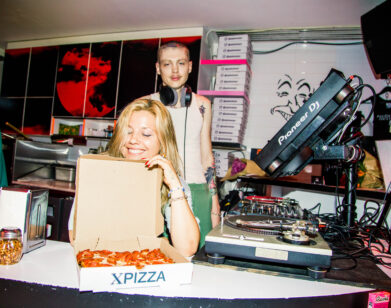Artist Rae Klein on How to Find Comfort in Calamity
Rae Klein’s first real experience—or, as she would call it, her “a-ha” moment—with art came in her junior year of college at Eastern Michigan University. Klein, who at that point didn’t have enough credits to graduate, conducted an independent study with one of her professors. In this course, Klein visited a series of artists’ studios in Chicago, seeing the varying techniques they used to explore their mediums. It was here that Klein realized, for the first time, that to create art is to do and make things for oneself; to explore what you find fascinating or thought-provoking, and go from there. In her latest installation and first solo show, at Jessica Silverman in San Francisco, Klein tackles a subject that has interested her since her teenage years: every day, pre-used products that one could easily find in a thrift store or eBay, like curtains or table sets. Klein’s paintings are imbued with a striking dichotomy; an off-kilter balance of the surreal and the ordinary, a departure from common ideas of stability and permanence, and an emphasis on the malleability of space. Klein’s exhibit is open until October 29th, and she sat down with us to discuss to exhibit, the inspiration behind it, and her thoughts on Instagram and the art world.
———
JACKSON WALD: When I was reading the press reports, I found it fascinating how you were effectively a curator for these objects you found on eBay and old Sears catalogs. Could you walk me through the process of finding these materials?
KLEIN: Totally. This is a good question. So for these paintings, specifically, it’s a lot of paintings of curtains. Last year, I was looking to make a collage. So I went into an antique store, and I found a Sears catalog. I’d looked at them before, but this one caught my eye. On the back, there was a picture of these curtains. I don’t know what it is about the way that they staged these photographs for catalogs, but I find them really interesting. I kind of put that aside for a while, and then Jessica [Silverman] asked me to do the show, and she had a big velvet curtain hanging up upstairs. I figured this is a great way to learn how to paint these curtains because I’d been toying with it for a while. So I just did some layouts, I took some pictures and scans of them, and I messed around with them a little bit, digitally, in Procreate. There are also some table sets and stuff I’ve been doing. Those are from eBay. I’ve been looking at people’s photos of tables set up for graduation, and special events. There are photos of that, which people put on eBay, just from their family’s collection.
WALD: What specifically interests you about these family collections on eBay? Is it because it’s this very intimate thing being put in a public marketplace?
KLEIN: Yes, exactly. It’s this moment in time, a room that only certain people are going to be in. Somebody took a picture, and now it’s totally lost from the original event—an event so important that somebody took a photo of it, and now it’s on eBay, and you can buy it for $2.
WALD: There’s also something strange, almost perverse, about it. You wonder why these people are selling it, or why they want to get rid of it.
KLEIN: Yeah, exactly. I started collecting photos when I was in high school. I would go to thrift stores and buy cameras that still had the film in them, and I’d take the film out and get it developed. That was my little hobby, to find out what was on these cameras that people had donated that they had forgotten to develop the film. I hadn’t really found a way to work that kind of idea in [to my art] until recently. It’s kind of weird to get the photos back, and it’s pictures of a parade, or a baby, or whatever. It’s like, “Who are these people?” There’s no real way to find out.
WALD: How do you treat the original, source material when painting it? How do you attempt to elevate it?
KLEIN: Let’s see. I can’t get it to a new level that’s exciting for me, then I just don’t paint it, I guess. So that’s why I’ve been messing around with them digitally or collaging them. I’ve got a lot of paintings recently of table settings collaged or superimposed on top of a sky. I guess what can “up” them is if I can get them to balance, or if I can get the colors to coexist with another image, then they are ready to be painted. But if not, I don’t really have any interest, at this time, in just painting the original source image.
WALD: What inspired the title of the exhibit The Comfort in Calamity? How did you end up with that title?
KLEIN: Good question. Me and the team [at Jessica Silverman] came up with that together. It was about the comfort that comes with knowing that other people are going through this kind of loss with the objects, or—the curtains, they’re kind of familiar. You might almost recognize them, maybe from a house you’ve been in. There’s that comfort there, but yet, there’s a disconnect; they’re on this red background, or there’s a little thing shining in the distance, out the window.
WALD: There are 10 paintings in this collection. Did you make only 10, or did you make more and then have to narrow it down?
KLEIN: So, I only made 10. Right now, I’m kind of at a phase where I’m making work as the show approaches. So I don’t really have a backlog of paintings for them to choose from. Now, everything is nicely got a bow on it, so I’m getting caught up. But these ones were the 10 I made for Jessica, and we’re running with it.
WALD: Nearing the end of the process of making them, was there a moment where you felt like, “Okay, these are done. I’m ready to show these to the world.?” Or do you never feel like that, and are always wanting to tinker more?
KLEIN: All the curtains, I’m very excited about, and I didn’t feel the need to tinker at all. Once they were done, I’m like, “This is it. This is great.” That’s always very exciting for me. Those are some of my favorite paintings. The other ones, some of them were hard to bring to a finish. But thankfully, with the deadline, you’re just solving problems, getting them done, and sending them off.
WALD: Was there one specific piece that you made of these 10 that has added weight, or emotional or personal significance to you? If so, are there any anecdotes you could share about creating that one, and the process behind it?
KLEIN: Yeah. So there is one with two curtains that I made, and it was the last one I did. It came really easily, and the sketch for it was very exciting to me. It’s always really nice when you can do the last painting, and you’re like, “This is a good one, and this is a nice bow on the top.” So I really like that one because the curtains are a little smaller. There’s just a big field of red. I’m really into the red, lately, so that’s why I’m excited about that one. It’s nice to end it with the painting that you’re like, “I can do more with this, and I know what to do next time, for the next series.”
WALD: As an artist, how do you acknowledge your artistic influences and continue to be motivated by them, while also maintaining your own creative signature? What is that balance like for you?
KLEIN: What helped me is that growing up, I’m not really from an artistic family. I’m from Michigan. It’s not a huge art scene. So, in my formative years, I didn’t have a lot of access to other artists, and I think it helped me to solidify my own vision. Just being starved of really good art for long. Then, when I finally was flooded with all this good art, actual art, when I was in college, which was the first time I’d been to an art museum or seen an actual painting, I think I already had some of my own ideas. Then, I could take the little bits I need from my influences, and leave the rest. Luckily, the school I went to had a really good art program. I remember having this aha moment, like, “This is what art is.” That was amazing. That was an amazing experience.
WALD: Could you elaborate on that at all? Do you remember the specific moment, or was it just generally being at the school?
KLEIN: Yeah. I remember it was actually when I was a junior. I wasn’t going to have enough credits to graduate on time, so I asked my professor if we could do an independent study. He’s like, “Yeah. What we’re going to do is we’re going to go visit artists’ studios in Chicago,” which is where he worked. I remember being in this artist’s studio, and she was explaining that she makes these paintings of places where—you know how when you are looking at something bright, and you close your eyes, you can see the negative or the shadow image of it?
WALD: Yeah, totally.
KLEIN: She was explaining that. I had this aha moment of like, “Oh, you can just be a regular person, doing things that are interesting to you, and go as deep with it as you can go. That’s what art is.” That changed the game for me. It might have taken longer if I hadn’t gone up to that studio, and heard her talking, person to person.
WALD: You have a fair amount of followers on Instagram, and that’s obviously a great vehicle to get your work out there. So I’m just wondering about your overall thoughts on Instagram and its role in the art space.
KLEIN: I really like this question. I think Instagram, for artists like me, who didn’t grow up in an art city or came from a place where it is difficult to see art or get it shown, is amazing. I heard it put as, “Drinking champagne from a styrofoam cup.” I mean, I guess it is what you make of it. There are pros and cons to social media, but if you can use it, really great things happen, Most of my opportunities career-wise have come from people being like, “Hey, I saw your work on Instagram.” Then, they’re like, “Oh, are you in New York or LA?” I’m like, “Neither.” So I’m really glad that I figured out how to use it to find people. I think it’s really been helpful for galleries as well because it makes it easier to find artists that are a little more hidden.

